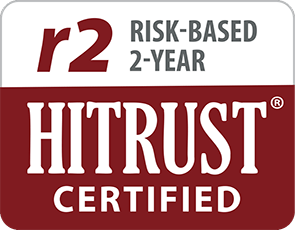Written by Ashley Kane,
Brightside Health
9 Minute Read
This month marks the 50th anniversary of Pride traditions. Pride Month is a time for the LGBTQI+ community and allies to come together to celebrate and embrace sexual individuality and gender identity and continue to fight for equality.
Mental health and the LGBTQI+ community is an important topic. LGBTQI+ people have higher rates of depression and anxiety as compared to heterosexual or cisgender people. Still, members of the LGBTQI+ community experience factors such as discrimination, rejection from peer groups, and social stigma, which prevents them from getting the mental health care they need––and everyone deserves equal access to mental health care.
Our Director of Therapy, Marie Atallah, Ph.D., sat down to talk with us about the prevalence of depression and anxiety in the LGBTQI+ community. Dr. Atallah covers how and why anxiety and depression affect LGBTQI+ people at a higher rate, the disparities that exist, and tips and resources for getting the help you need. Whether you’re a member of the LGBTQI+ community or consider yourself an ally, now is the time to come together and take Pride in your mental health journey.
Depression and anxiety in the LGBTQI+ community
Research has shown that LGBTQI+ people experience depression and anxiety at a higher rate than the general population. That rate is 2.5 times higher than that of heterosexual or cisgender people.1 Identifying as LGBTQI+ does not directly contribute to depression and anxiety. However, due to contextual factors such as discrimination, rejection from peer groups, and societal stigma, LGBTQI+ individuals are faced with additional emotional burden.
LGBTQI+ people also experience a higher risk of suicide. LGBTQI+ youth are four times more likely to attempt suicide, experience suicidal thoughts, and engage in self-harm, as compared to teens that are heterosexual.2 Additionally, 38–65% of transgender individuals experience suicidal ideation.3
The disparities don’t stop there. LGBTQI+ people also experience a higher risk of substance abuse disorder. Based on research, an estimated 20–30% of LGBTQI+ individuals abuse substances, as compared to about 9% of the general population.4 Research shows that 25% of LGBTQI+ individuals abuse alcohol, as compared to 5–10% of the general population.5
What causes a higher prevalence of anxiety and depression in LGBTQI+ individuals?
The following are reasons researchers have cited for contributing to higher rates of depression and anxiety within the LGBTQI+ community.
Minority Stress
Psychologists refer to the contextual process of dealing with persistent prejudice and discrimination as minority stress. Minority stress is the additive stress resulting from persistent prejudice and discrimination resulting from being part of a stigmatized minority group.6
Many studies have shown that minority stress has powerful, lasting, and negative impacts on the mental health and well-being of LGBTQI+ people. It creates a situation ripe for struggling with anxiety and depression.
Research suggests that LGBTQI+ individuals are more prone to experience several external stressors. These stressors include physical and verbal harassment, service refusal, and discrimination in the workplace, housing market, and the medical field. LGBTQI+ people can also experience persistent microaggressions in everyday life.7
According to Dr. Marie Atallah,
“Regardless of how “open” or “liberal” an environment may seem, LGBTQI+ individuals experience a high level of prejudice, discrimination, and stress in their daily lives. Members of the LGBTQI+ community are often tasked with constantly appraising their situation and adapting to how much they can safely reveal of themselves. While this can be seen as an adaptive process, it places a great deal of mental and emotional strain on the individual.”
These external stressors make LGBTQI+ more prone to internalizing the adverse events, attitudes, and beliefs they have experienced. This internalization results in higher levels of self-concealment, fears of rejection, difficulty creating a positive sexual identity, hypervigilance, internalized feelings of low self-worth, and low self-esteem.7
Acceptance by peer group and family
In LGBTQI+ adolescents, low social support has been linked to higher risks of mental health disturbance such as depression and anxiety, as well as a heightened risk for substance use, homelessness, risky sexual behaviors, and low self-esteem.8 Conversely, LGBTQI+ youth who could identify one supportive adult in their life were 40% less likely to report a suicide attempt in the last year.9
In LGBTQI+ adults, a similar relationship has emerged. Research suggests that strong familial support during teenage years buffers the adverse effects of minority stress. Research also suggests it is associated with higher self-esteem and better life situations in LGBTQI+ adults. Conversely, family rejection and low community and peer-group support is linked to poorer mental and physical health outcomes.10
Lived and vicarious experiences & hypervigilance
In addition to everyday stressors, individuals in the LGBTQI+ community may experience another set of stressors specific to their gender and minority identity. Failure or refusal to comply with societal gender role expectations can lead to experiences of hostility and victimization. LGBTQI+ individuals experience violence and victimization more than their non-LGBTQI+ counterparts.11
Personal and vicarious experiences of violence, rejection, and discrimination, can lead to a heightened state of alertness, guardedness, or precaution––otherwise known as hypervigilance. LGBTQI+ individuals have reported a state of hypervigilance in their day-to-day life.12
Access to mental health care
LGBTQI+ individuals with a mental health condition experience multiple levels of social stigma due to their minority identity and presence of mental health conditions. LGBTQI+ individuals report experiences of discrimination ranging from verbal harassment to refusal of care when seeking care for mental health conditions. Many individuals may feel uncomfortable disclosing their identity to their providers, which only contributes to heightened distress and unmet needs.13
More than one in five LGBTQI+ individuals reported withholding information about their sexual practices from their doctor or another health care professional. Additionally, nearly 30% of transgender individuals reported either postponing or avoiding medical care altogether when they were sick or injured due to discrimination and disrespect. Over 30% delayed or did not attempt to get preventive care.14
Getting Help
Despite increased rates of depression and anxiety, these conditions are treatable. Finding the right treatment and a culturally informed provider is essential for members of the LGBTQI+ community.
Therapy
Therapy provides a safe space to explore and understand the impact of stigma and discrimination on self-worth and self-identity. Therapy can help individuals develop positive coping strategies and explore how external stressors may have led to negative internalized beliefs.
Additionally, if you are experiencing depression and anxiety symptoms, therapy can help identify how patterns of thinking, feeling, and behaving relate to your symptomatology.
Remote therapy
Remote therapy can bypass the fear of accessing care in traditional centers or clinics. Remote care can promote a sense of safety and increase access to care for LGBTQI+ individuals with limited access to treatment options.9
What to look for in a provider
Dr. Atallah suggests looking for providers who are keenly aware of the unique stressors, issues, and concerns of the LGBTQI+ community. It can be helpful to directly ask about their experience working with LGBTQI+ members in the past as well as any specific training or education that they received. Connecting with a culturally informed provider is key to aiding in recovery.14
Medication
Medication is an effective form of depression and anxiety treatment for many people. Because there are many forms of depression and anxiety, and each individual is unique, getting the best result requires matching each individual to the right medication. Then, once a treatment plan has been established, your doctor can fine-tune further treatment based on your response to the medication.
Medications commonly prescribed as a first line of treatment for depression include selective serotonin reuptake inhibitors (SSRIs) and norepinephrine-dopamine reuptake inhibitors (NDRIs). Common examples include Sertraline (Zoloft), Escitalopram (Lexapro) and Bupropion (Wellbutrin). There are other categories of medications that are used as well. Have a conversation with your doctor to figure out if medication is the right treatment option for you.
Self-care
Many treatment plans for anxiety and depression involve aspects of self-care. Getting regular exercise and good quality sleep can have a major effect on managing your depression and anxiety. Practicing mindfulness, keeping a healthy and balanced diet, and connecting with loved ones or a support group are also highly impactful ways to aid in treating anxiety and depression.
LGBTQI+ mental health resources
For more information on mental health in the LGBTQI+ community, check out the list of resources below.
LGBTQI+ Resources
- The Trevor Project: The leading national organization providing crisis intervention and suicide prevention services to LGBTQI+ teens and young adults.
- LGBTQI+ national hotline: A safe, free, and confidential hotline for members of the LGBTQI+ community to speak to a trained volunteer about issues such as coming out, sexual identity, bullying, suicide, and more.
- Trans lifeline: A trans-led organization that connects trans people to the community, support, and resources they need to survive and thrive.
- SFLGBT Center: A comprehensive directory of LGBTQI+ businesses, opportunities, and training in the San Francisco Bay Area.
- Healthcare Equality Index (HEI): A resource for finding LGBTQI+ friendly healthcare across the United States.
If you are struggling with anxiety or depression, do not hesitate to reach out. Click here to take our clinically-validated mental health screener and get connected with one of our providers today.
How can I get help if I’m in crisis?
Your safety is important to us. If you are in emotional distress or thinking about hurting yourself at any point, please make use of these resources:
- Visit: If you are having a medical or mental health emergency, call 911 or go to your local emergency department.
- Text: The Crisis Text Line provides 24 hour free and confidential help. Text ‘HOME’ to 741-741 to connect with a counselor immediately.
- Call: You can call the 988 Suicide & Crisis Lifeline at 800-273-TALK to talk with a live counselor 24 hours per day.
There is always help available. We recommend also reaching out to a family member or friend to let them know that you are having these thoughts and ask for help and support.
Sources:
- https://www.kff.org/disparities-policy/issue-brief/health-and-access-to-care-and-coverage-for-lesbian-gay-bisexual-and-transgender-individuals-in-the-u-s/#footnote-256162-25
- https://www.cdc.gov/mmwr/volumes/65/ss/ss6509a1.htm
- https://transequality.org/sites/default/files/docs/usts/USTS-Full-Report-Dec17.pdf
- https://www.samhsa.gov/data/sites/default/files/NSDUH-SexualOrientation-2015/NSDUH-SexualOrientation-2015/NSDUH-SexualOrientation-2015.htm
- https://link.springer.com/article/10.1007%2Fs10508-016-0869-1
- https://www.tandfonline.com/doi/abs/10.1080/19359705.2019.1568946
- https://www.tandfonline.com/doi/abs/10.1080/01612840.2017.1398283?src=recsys&journalCode=imhn20
- https://www.thetrevorproject.org/2019/06/27/research-brief-accepting-adults-reduce-suicide-attempts-among-lgbtq-youth/
- https://onlinelibrary.wiley.com/doi/abs/10.1111/fare.12124
- https://login.libproxy.scu.edu/login?qurl=https://www.tandfonline.com%2fdoi%2ffull%2f10.1080%2f10538720.2014.953660
- https://www.researchgate.net/publication/335111064_LGBTQ_Individuals%27_Lived_Experiences_of_Hypervigilance
- https://login.libproxy.scu.edu/login?qurl=https://link.springer.com%2farticle%2f10.1007%2fs11414-019-09677-1
- https://nwlc-ciw49tixgw5lbab.stackpathdns.com/wp-content/uploads/2015/08/lgbt_refusals_factsheet_05-09-14.pdf
- https://login.libproxy.scu.edu/login?qurl=https://link.springer.com%2farticle%2f10.1007%2fs11414-019-09677-1










